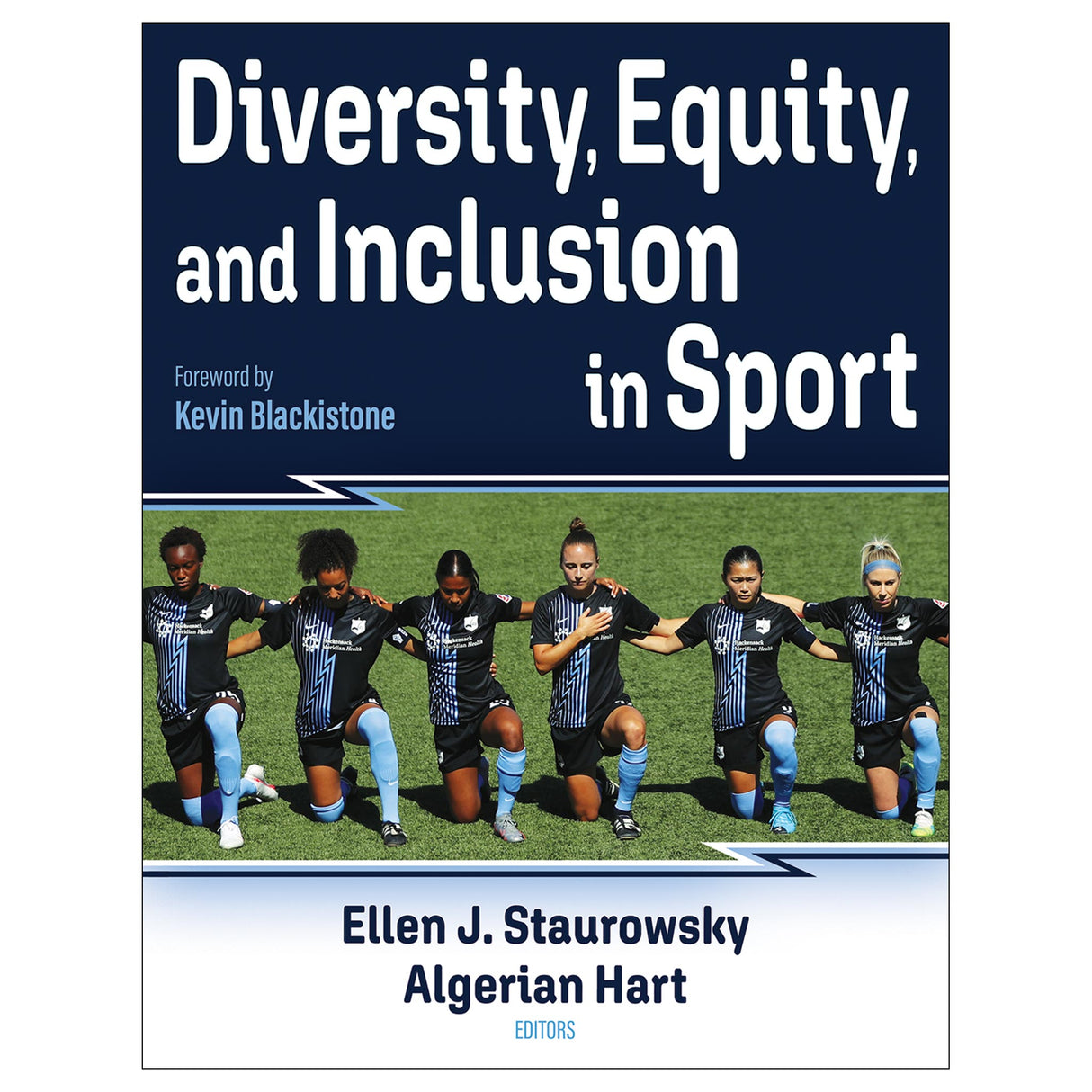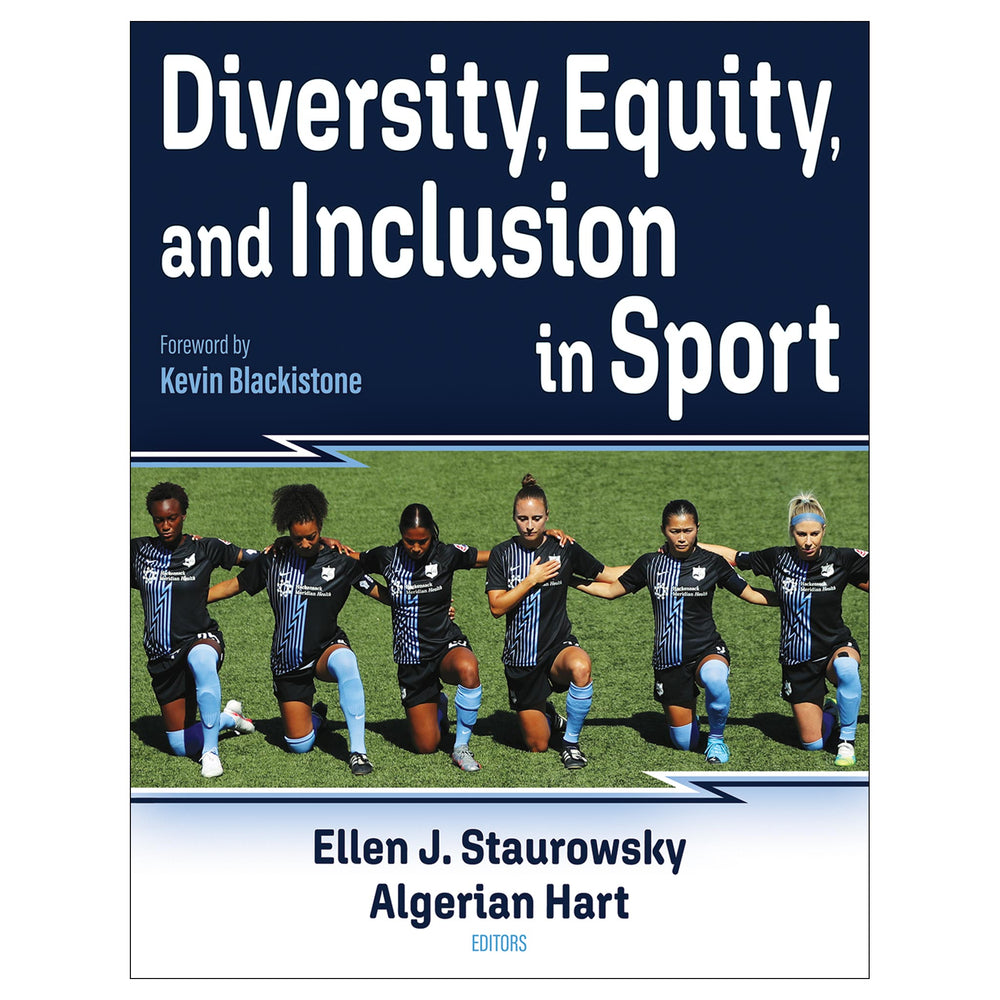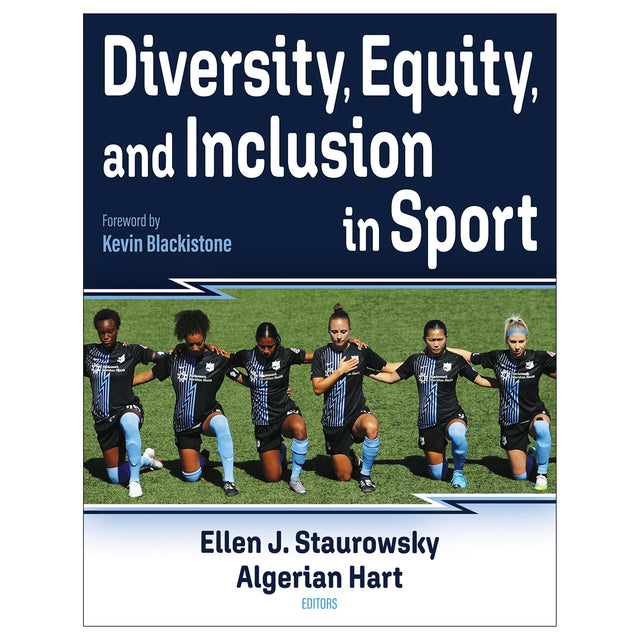Diversity, Equity, and Inclusion in Sport
Author: Ellen Staurowsky, Algerian Hart
$99.00 CAD
Organized into three parts, Diversity, Equity, and Inclusion in Sport aims to clearly illustrate how to make a true impact in sport settings. Part I delivers foundational knowledge of what diversity, equity, and inclusion mean within sport organizations, including how power and privilege play out in sport organizations to include some and exclude others. Students will develop the skills associated with appreciating and having conversations about differences and learn how understandings about difference affect policy development and decision-making.
Part II further develops understanding of diversity, equity, and inclusion through comprehensive coverage of critical areas of diversity that have an impact on the sport industry, including social class and economic status, gender and gender identity, race and ethnicity, disability, political influence and affiliation, religion, and age.
Part III is designed to empower sport professionals to become leaders, providing actionable advice on promoting and successfully implementing best practices. Students will learn about connecting difficult conversations to leadership, planning strategically, assessing organizational climate, and using sport as a platform for social change.
Each chapter opens with a real-life scenario introducing the chapter’s topic and closes with exercises to prompt critical thinking about the issues raised. Sport Industry Leader Profiles provide interviews with leading professionals for practical, informed opinions on the issues presented. Sport Industry Diversity Initiative sidebars feature organizational approaches to DEI issues.
Diversity, Equity, and Inclusion in Sport addresses the key areas and challenges surrounding DEI in the sport industry and examines the role of sport in effecting social change. With practical application skills on incorporating knowledge into decision-making, current and future professionals alike will be prepared to lead sport businesses as diverse, equitable, and inclusive environments.
Audience
Text for undergraduate and graduate courses in sport management, sport business, and social issues in sport. Reference for professionals and scholars.Part I. Foundations of Diversity, Equity, and Inclusion in Sport
Chapter 1. Diversity, Equity, and Inclusion Within Sport Organizations
Algerian Hart
Chapter 2. Engaging in Difficult Dialogues About Diversity, Equity, and Inclusion in Sport
Ellen J. Staurowsky
Chapter 3. Social Class and Economic Status
Na Ri Shin
Part II. Forms of Diversity in Sport
Chapter 4. Race Matters in Sport
Joseph N. Cooper
Chapter 5. Power Play: Race and Ethnicity in Sports
Beau Manierre Houston and Jeffrey Montez de Oca
Chapter 6. Sports as a Gendered Space
Amira Rose Davis
Chapter 7. Sexual Diversity, Sexual Orientation, and Sexual Identity
Kiera Duckworth and Luca Maurer
Chapter 8. Disability: Inclusion in Action
Mary A. Hums and Eli A. Wolff
Chapter 9. Preserving Athlete Humanity in a Production Culture
Ellen J. Staurowsky
Chapter 10. The Politics of Sport and the Political Forces That Shape Sport
Ellen J. Staurowsky
Chapter 11. Sport, the Influence of Institutionalized Religion, and Religious Identity
Timothy Mirabito and Robin Hardin
Chapter 12. Coming of Age and Aging Out in Sport
Ellen J. Staurowsky, Amanda L. Paule-Koba, and Michael Sachs
Part III. Creating and Sustaining Inclusive Sport Organizations
Chapter 13. When They See Us: Sport Leaders Moving Beyond Bias
Billy Hawkins
Chapter 14. Creating a Vision to Ensure Diversity, Equity, and Inclusion Within Sport Organizations
Ketra L. Armstrong
Chapter 15. Using Sport as a Platform for Lasting and Significant Social Change
Akilah R. Carter-Francique
Staurowsky is coauthor of College Athletes for Hire: The Evolution and Legacy of the NCAA Amateur Myth and editor of Women and Sport: Continuing a Journey of Liberation and Celebration. She regularly works with the National College Players Association and has coauthored several of their reports, including “How the NCAA’s Empire Robs Predominantly Black Athletes of Billions in Generational Wealth.” She has worked with the Women's Sports Foundation on several research projects and served as lead author on “Chasing Equity: The Triumphs, Challenges, and Opportunities in Sports for Girls and Women.”
Staurowsky is currently a senior writer for Legal Issues in College Athletics and Sports Litigation Alert. She has been a columnist with College Sports Business News and the Women in Coaching blog, and she is cofounder and editor of the LGBT Issues in Sport: Theory to Practice blog.
Algerian Hart, PhD, is the associate dean of the graduate college and a professor of kinesiology at Missouri State University. He is president of the North American Society for the Sociology of Sport (NASSS) and has served on the organization’s diversity and conference climate committee. He also serves on the inclusion committee for the North American Society for Sport Management (NASSM).
Hart is a peer reviewer for the Higher Learning Commission, is a faculty evaluator for the American Council on Education, and serves on the editorial review boards for the Journal of Athlete Development and Experience and the Sociology of Sport Journal. He has written extensively on the topics of marginalized populations in education and student-athlete advocacy, and he is the author of The Student Athlete’s Guide to College Success.
Gender and athletic administration and coaching
Marketing athletes
Political lobbying and sports
Sport Industry Leader Profile: Stephanie Wheeler
Strategies for facilitating difficult conversations about diversity and inclusion
All ancillaries are free to adopting instructors through HKPropel.
Instructor guide. Includes two semester-long group project ideas, a sample syllabus, chapter summaries, lecture aids, sample assignments, classroom discussion questions, and recommended responses for the end-of-chapter critical thinking exercises and end-of-chapter review questions.
Test package. Contains 300 questions in true-false, fill-in-the-blank, and multiple-choice formats. The files may be downloaded for integration with a learning management system or printed for use as paper-based tests.
Presentation package. Features more than 250 PowerPoint slides of text, artwork, and tables from the book that can be used for class discussion and presentation. The slides in the presentation package can be used directly within PowerPoint or printed to make handouts for students. Instructors can easily add, modify, and rearrange the order of the slides.





